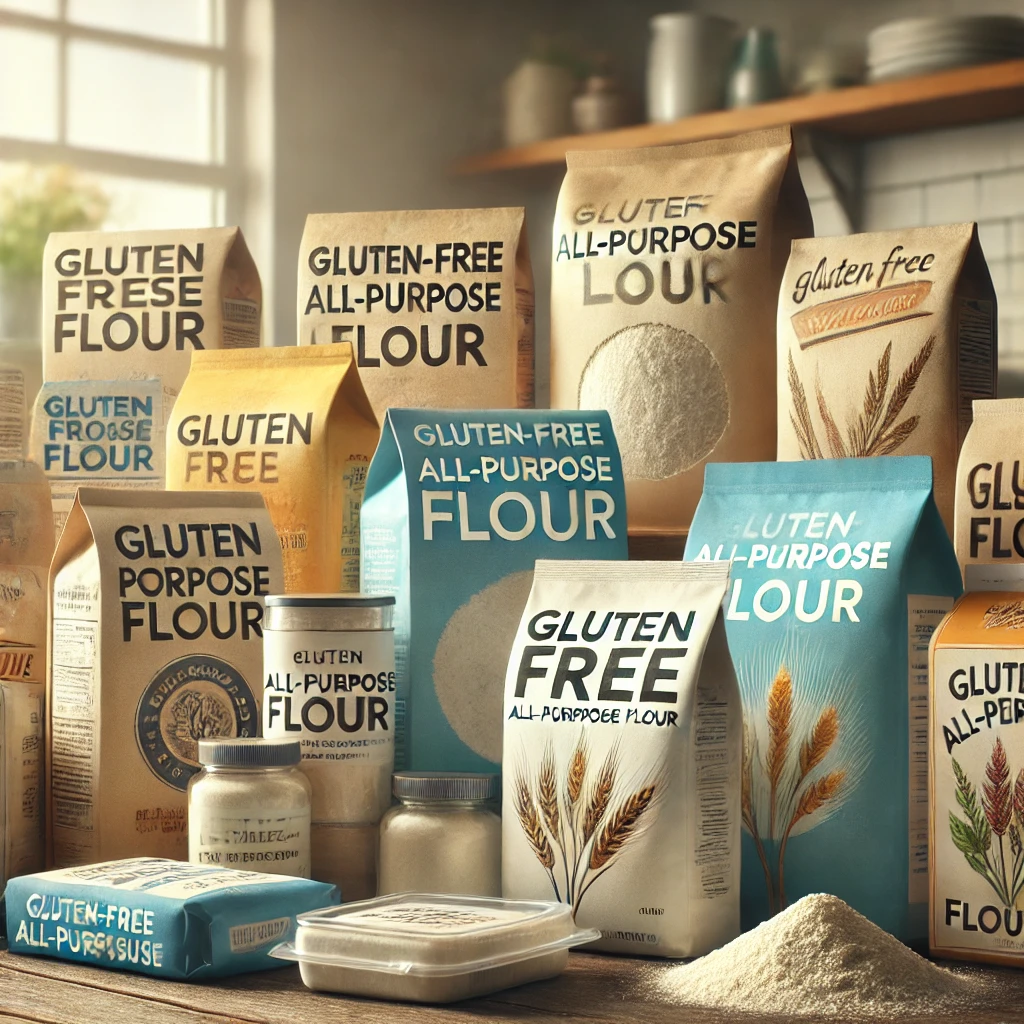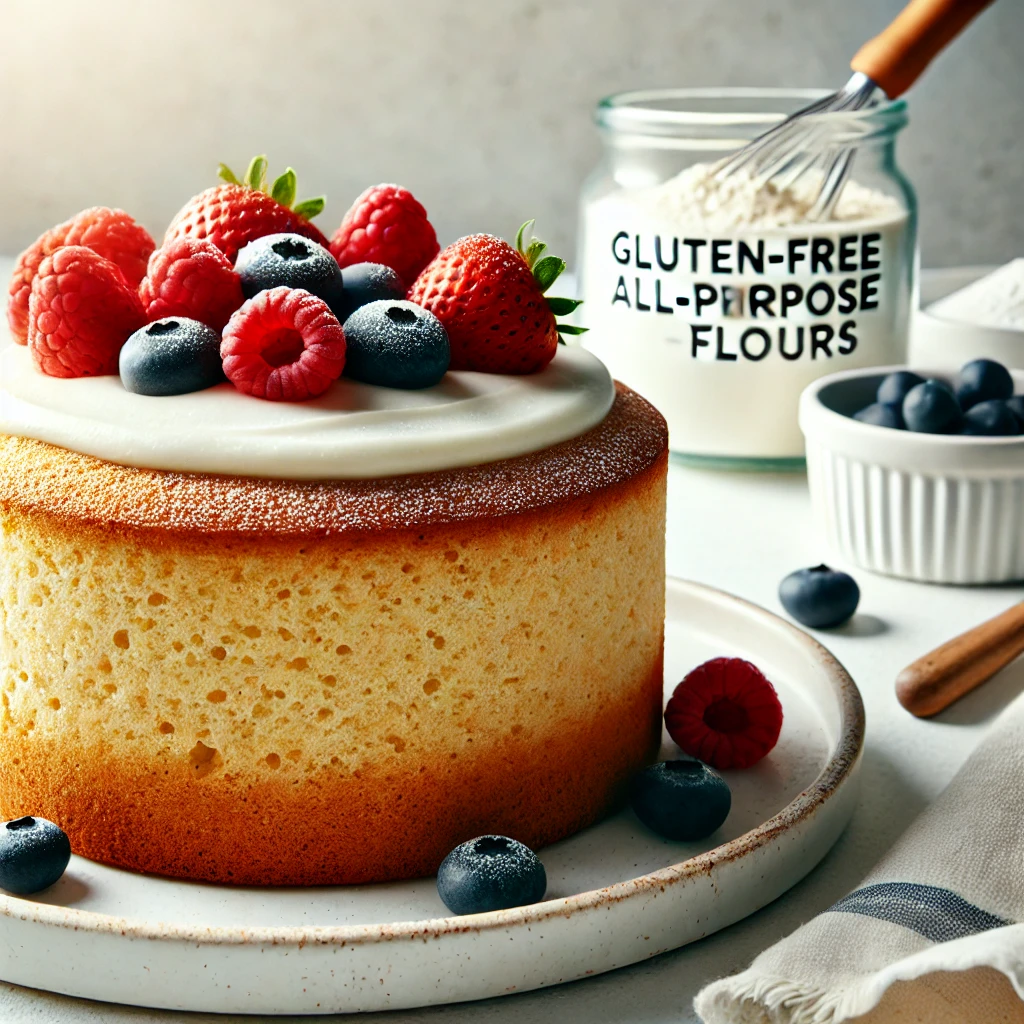What makes the best gluten free all-purpose flour?
The best gluten free all-purpose flours are typically blends of several different gluten free grains and starches, offering a balance of proteins, fibers, and starches in place of gluten’s functionality. A good blend of all-purpose flour should be able to yield light, airy cakes, chewy cookies, and soft bread without leaving a gritty or dense texture. Besides that, it has to be versatile enough for cakes and cookies to bread and pancakes.
Best Gluten Free All-Purpose Flours Reviewed
In this part, we will review the best gluten free all-purpose flours that excel in taste, texture, and performance.
1. Bob’s Red Mill Gluten Free All-Purpose Flour
Pros: Bob’s Red Mill Gluten Free All-Purpose Flour is actually a very popular option among the gluten free community. Made from a mixture of rice flour, potato starch, and tapioca flour, this flour is generally versatile enough for most baking applications. It’s usually praised for getting baked goods to a very close texture to traditional wheat flour products.
Cons: Some users find a bit of a gritty texture in some recipes, and it may require additional binding agents like xanthan gum or guar gum for optimal results in bread.
Best For: Cookies, muffins, and cakes.
2. King Arthur Gluten Free All-Purpose Flour
Pros: King Arthur’s Gluten Free All-Purpose Flour is another highly-regarded option that offers consistent results in both sweet and savory baked goods. Made from a blend of rice flour, tapioca starch, and potato starch, with added xanthan gum for improved texture and elasticity.
Cons: King Arthur’s blend can be a bit more expensive than other options. Some users also note that it has a slightly denser texture in bread recipes.
Best For: Breads, pizza crusts, and pancakes.
3. Cup4Cup Gluten Free Flour
Pros: Cup4Cup is a high-quality gluten free general-purpose flour, which can assure excellent results without binding agents in baking. The ingredients used include cornstarch, white rice flour, and sorghum flour. Many users like the fact that this flour replaces wheat flour in most recipes without needing changes.
Cons: It is one of the more expensive ones and not as easy to find at times.
Best For: Pastries, cakes, and cookies.
4. Pamela’s Products Gluten Free All-Purpose Flour
Pros: The reason Pamela’s blend is so popular is because this is a very moist and soft gluten free baked good with fantastic flavor. Rice flour, potato starch, and sorghum flour make up this flour, which does really well in many gluten free recipes.
Cons: Sometimes it can make the baked goods a bit too moist; in some recipes, you need a more dry, powdery texture.
Best For: Brownies, cookies, and cakes.
5. Better Batter Gluten Free All-Purpose Flour
Pros: Made with a blend of rice flour, potato starch, and tapioca flour, Better Batter Gluten Free Flour boasts the best flavor and texture. Free of added gums, it’s also an excellent choice for people who have adverse reactions to xanthan or guar gum.
Cons: Although very versatile, some find that it leaves a slightly gritty texture in certain baked goods.
Best For: Cupcakes, muffins, and quick breads.
Factors to Consider When Choosing the Best Gluten Free All-Purpose Flour
Although the best gluten free all-purpose flour may be subjective, depending on personal preference, there are some things to consider before one makes a selection.
1. Texture and Consistency
Among the most important considerations is the texture of your final product. The best gluten free all-purpose flours will have a similar texture to traditional wheat flour, yielding baked goods that are soft, airy, and chewy without being heavy or crumbly.
2. Taste
Gluten free flours have distinct tastes that can be imparted onto your baked goods. Find a mix that enhances the flavors of your recipes, not overpowers them. Many high-end gluten free flours have neutral tastes that go well with an array of baked goods.
3. Price and Availability
According to where one lives, the best gluten free all-purpose flour brands will vary in price and availability. Some are pricier, and that is because of the high quality, but another one is more affordable, hence it is easily found at any store.
How to Use Gluten Free All-Purpose Flour

After determining your personal best gluten free all-purpose flour, now is the time to bake! Here is how to use gluten free flour:
- Substitution: You can substitute wheat flour with gluten free all-purpose flour in general, using a 1:1 ratio, but do follow any specific instructions provided in the recipe to get the best results.
- Binding Agents: Most gluten free flour blends are best used in conjunction with binding agents like xanthan gum, guar gum, or psyllium husk to hold your dough together.
- Hydration: Gluten free flour tends to be more absorbent than wheat flour; therefore, you may need to adjust the liquid content in your recipe.
Conclusion: How to Choose the Best Gluten Free All-Purpose Flour
The best gluten-free all-purpose flour is a matter of personal preference and intended use. Whether you are looking for one that closely resembles the texture of wheat flour or works best in specific recipes, there is an abundance of high-quality options available for every taste and dietary need. Experiment with brands and blends until you find one that best suits your baking style and nutritional needs.
External Resources:
Explore more:
- Gluten-Free Bakery 10 Easy Gluten-Free Bread Recipes You Can Make at Home
- Top 5 Gluten-Free Baking Mistakes to Avoid for Perfect Results


